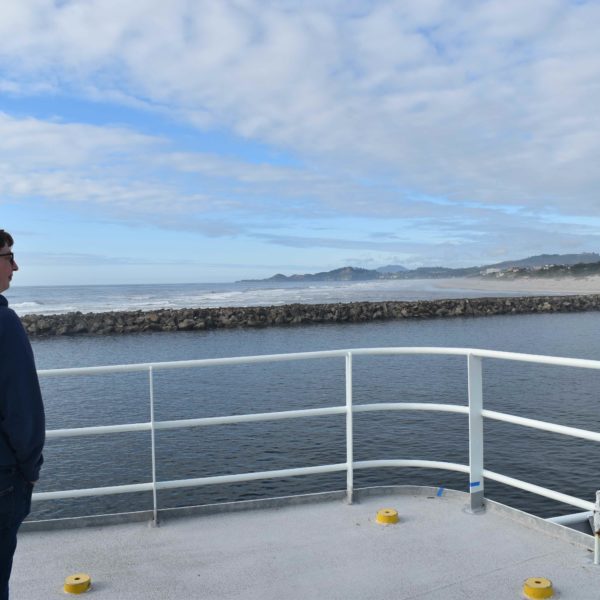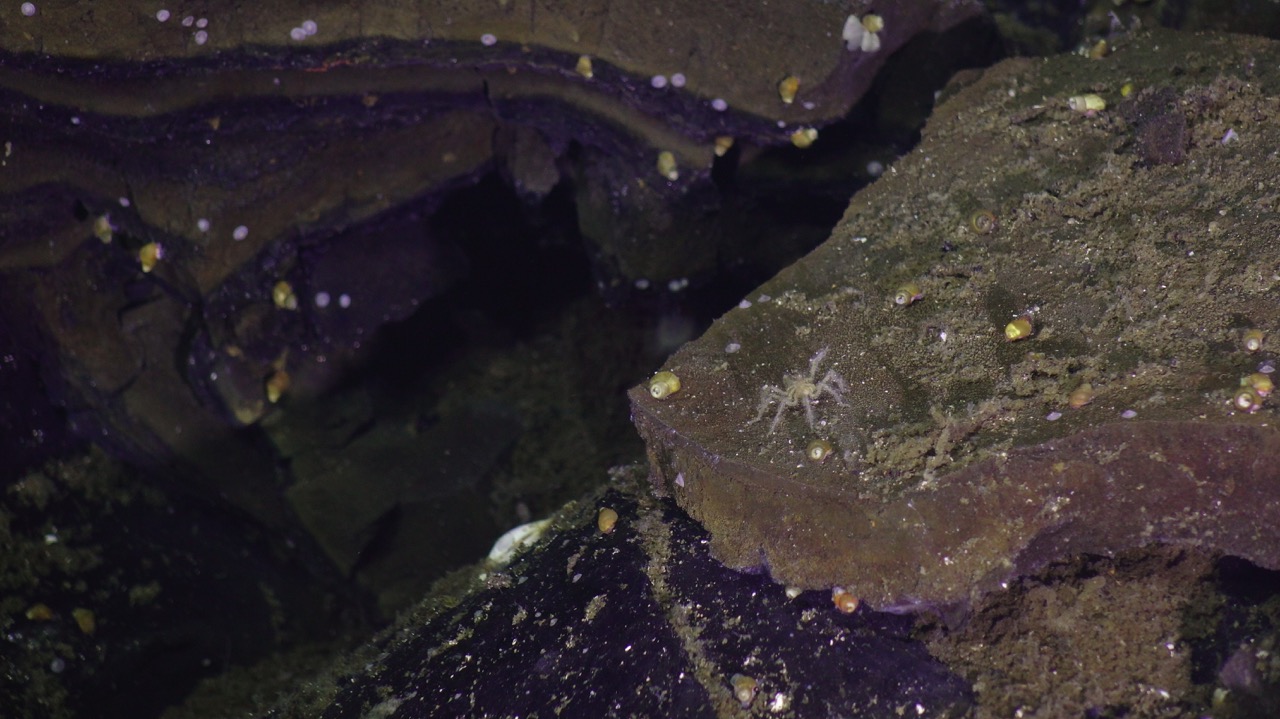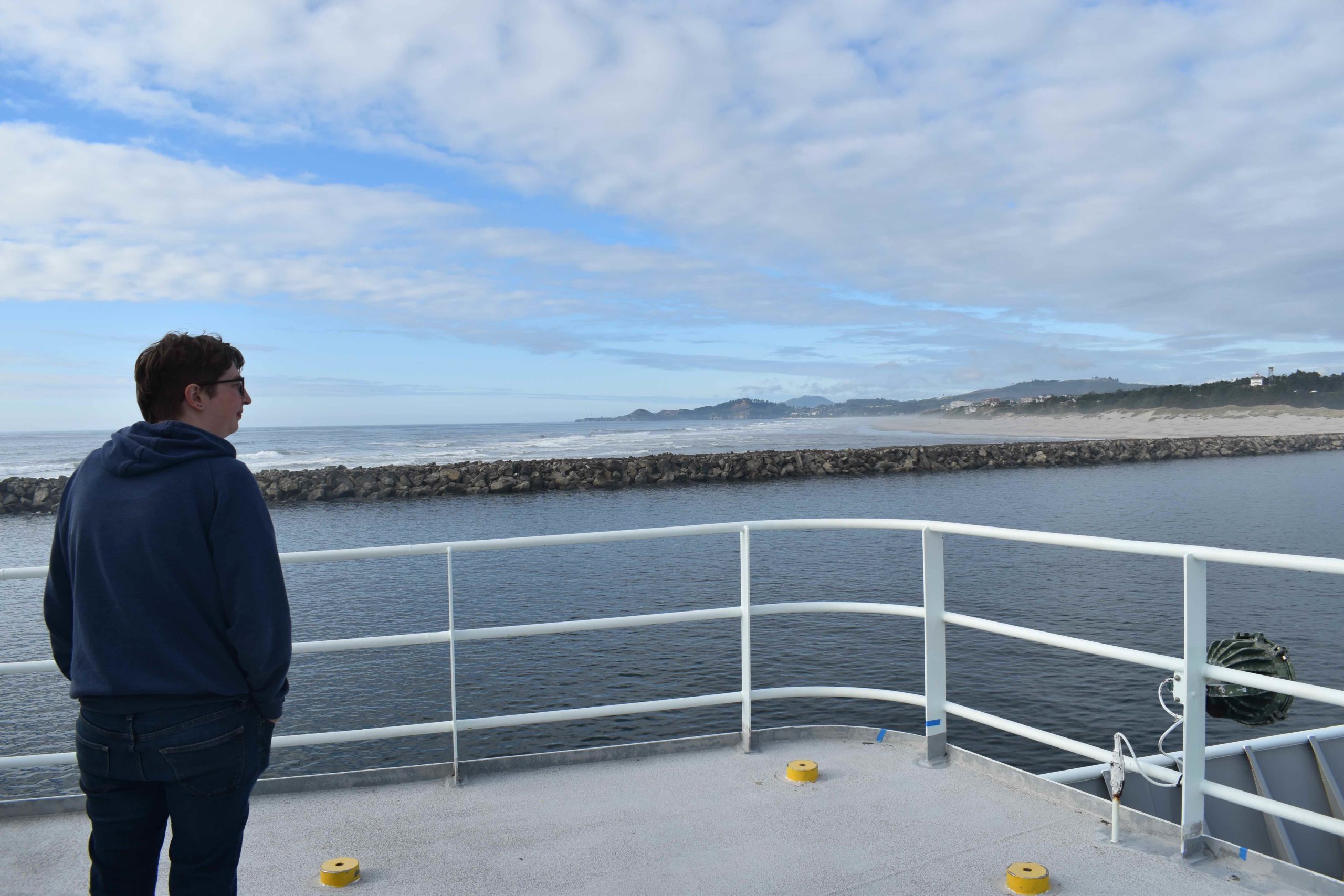Image Archive





























Tonight’s sunset over the ocean during our transit back to Newport. Credit: M. Ettari, University of Washington; V23.

Sea Anemones on a Float. Credit: Cameron Dalke; University of Washington, V23.

Jelly on a CTD. Credit: Cameron Dalke; University of Washington, V23.

Sea pigs on the Axial Seamount base. Credit: UW/NSF-OOI/WHOI; J2-1554; V23.

A CTD installed on the seafloor at Axial Base. Credit: UW/NSF-OOI/WHOI; J2-1554; V23.

Mola Mola sighting. Credit: J. Yearian, University of Washington, V23.

Screen grab of the Jason monitors showing the successful deep profiler instillation on Jason Dive 1552. Credit: J. Yearian, University of Washington; V23,

Andrew giving me and Aakriti a tutorial on Niskin bottle sampling. Credit J. Yearian, University of Washington; V23.

RCA engineers and ship crew gettign ready to spool cable in from the Offshore Deep Profiler Mooring. Credit: M. Elend, University of Washington, V23.

First time RCA Chief Scientist Katie Bigham (top row, second from left) with Co-Chief Scientist J. Nelson (far left), RCA technician Andrew Paley (top row, far right) and Leg 4 VISIONS students. Credit: M. Elend, University of Washington, V23.

Katie pondering while coming into Newport as she learned she would be Chief Scientist. Credit: M. Elend, University of Washington, V23.

The float for the Deep Profiler mooring at the Oregon Offshore site being brought onboard the Thompson. Credit: M. Elend, University of Washington; V23.

A pycnogonid (sea spider) posing for the camera on a basalt outcrop at Marker 113, a diffuse flow site in Axial Caldera. Credit: UW/NSF-OOI/WHOI, Dive J2-1559, V23.

A pycnogonid (sea spider) sitting on a basalt outcrop at Marker 113, a diffuse flow site in Axial Caldera. Credit: Carleton College/UW/NSF-OOI/WHOI, J2-1559, V23.

sulis_20230916220058_pycnogonid_rock

A pycnogonid (sea spider) climbing up the side of a basalt outcrop at Marker 113, a diffuse flow site in Axial Caldera. Credit: UW/NSF-OOI/WHOI, Dive J2-1559, V23.

Close-up of a rattail fish swimming near a vent covered in tube worms, limpets, and scale worms at Marker 113, a diffuse flow site in Axial Caldera. Carleton College/UW/NSF-OOI/WHOI, J2-1559, V23.

A rattail fish swimming above a vent covered in tube worms, limpets, and scale worms at Marker 113, a diffuse flow site in Axial Caldera. Carleton College/UW/NSF-OOI/WHOI, J2-1559, V23.

A rattail fish came to investigate the UFO fluid sampler activities at Marker 113, a diffuse flow site in Axial Caldera. Carleton College/UW/NSF-OOI/WHOI, J2-1559, V23.

Overhead shot of the UFO fluid sampler activities at Marker 113 (and the rattail fish that came to investigate). Carleton College/UW/NSF-OOI/WHOI, J2-1559, V23.

A scaleworm, snails, and an anemone on a basalt rock at Marker 113, a diffuse flow site in Axial Caldera. Credit: UW/NSF-OOI/WHOI, Dive J2-1559, V23.

A bright red scaleworm crawls over a field of limpets and palm worms at Marker 113, a diffuse flow site in Axial Caldera. Carleton College/UW/NSF-OOI/WHOI, J2-1559, V23.

A hydrothermal vent eelpout peeking out from behind limpets and chemosynthetic tube worms at Marker 113, a diffuse flow site in Axial Caldera. Carleton College/UW/NSF-OOI/WHOI, J2-1559, V23.

Jason inserting the probe of PI Rika Anderson's UFO fluid sampler into a hydrothermal vent at Marker 113, a diffuse flow site in Axial Caldera. Carleton College/UW/NSF-OOI/WHOI, J2-1559, V23.

A scaleworm climbing on a tube worm above a hydrothermal vent at Marker 113, a diffuse flow site in Axial Caldera. Carleton College/UW/NSF-OOI/WHOI, J2-1559, V23.

A salmon shark, smaller cousin of the great white shark, was seen briefly above International District vent field in Axial Caldera during the ascent. Credit: UW/NSF-OOI/WHOI, Dive J2-1556, V23.

A salmon shark (Lamna ditropis), smaller cousin of the great white shark, was cruising in the surface waters above International District vent field in Axial Caldera. We glimpsed it during the ascent after dive J2-1556 in 2023. A super rare sight! Credit: UW/NSF-OOI/WHOI, Dive J2-1556, V23.

A salmon shark (Lamna ditropis) seen near the surface at International District vent field in Axial Caldera. Credit: UW/NSF-OOI/WHOI, Dive J2-1556, V23.
- Anemone
- Animal
- Arthropod
- ASHES
- Axial
- Axial Base
- Axial Biology
- Axial Caldera
- Bacteria
- Basalt Lava
- BEP
- Biofouling
- biolgoy
- Biology
- Camds
- Camera
- Camhd
- Central Caldera
- Ciliates
- Cnidaria
- Coastal Biology
- Crab
- Deep Profiler Mooring
- Dive Highlights
- Eastern Caldera
- Echinoderms
- Endurance Array
- Engineering Team
- ENLIGHTEN 10
- Exploratorium
- Fish
- Geology
- HD Camera
- HPIES
- Hydrate Ridge
- Hydrates
- Hydrophone
- Hydrothermal Vents
- Illustration
- Inshore 80 Meters
- Instrument
- International District
- J-BOX
- Jason
- Jellyfish
- Junction Box
- K12
- Lava
- Mollusk
- Moorings
- Nodes
- Nudibranch
- Octopus
- OOI
- Oregon Offshore
- Oregon Offshore 600 m
- Oregon Shelf
- Oregon Slope Base
- People
- PN1B
- PN1D
- Polychaetes
- PPSDN
- Primary Node
- RASFL
- ROCLS
- ROPOS
- ROPOS Dives
- ROV Team
- RV Revelle
- RV Sikuliaq
- RV Thompson
- Salp
- Sample
- SC13
- Science Team
- Sea Cucumber
- Sea Star
- Sea Urchin
- Seafloor
- Seismometer
- Sensors
- Shallow Profiler Mooring
- Shark
- Shipboard
- Shore Station
- Slope Base
- Smoker
- Soft Coral
- Southern Hydrate Ridge
- Sponge
- Squid
- Students
- Students & Guest Participants
- Tmpsf
- Tubeworms
- VISIONS 11 Leg 1
- VISIONS 11 Leg 2
- VISIONS 11 Viewers
- VISIONS 13
- VISIONS 14
- VISIONS 15
- VISIONS 16
- VISIONS 17
- VISIONS 18
- VISIONS 20
- VISIONS 22
- VISIONS 23
- Visualization
